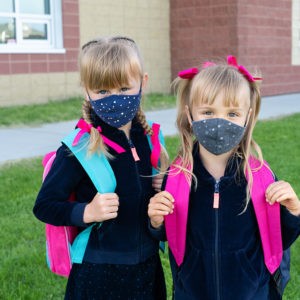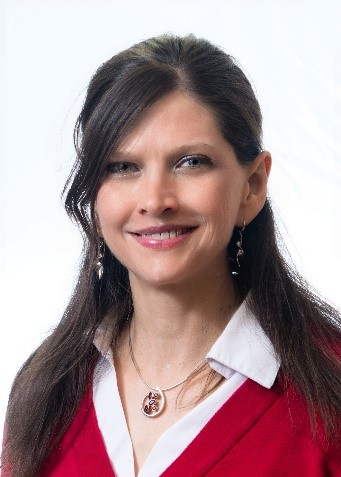The damage done to our children due to the pandemic, or our response to it, has been rearing its sick head. Approaching the two-year anniversary of the March 2020 shutdown and mask-wearing, speech-language pathologists have been reporting sudden surges in speech and language referrals, with some reporting over a 300 percent overall increase, especially in the infant and toddler age group. Meanwhile, scientists at Brown University found that children born during the pandemic had a 23 percent significant drop in their early learning composite score which includes measures in expressive and receptive language. Could masks have anything to do with the significant uptick in young children needing services.
Considering information known about mask acoustics, frequent ear infections in very young children, and speech and language development, the possibility that masks present harm to the speech and language learning process should be considered, especially for those children who spend significant portions of their day with masked caregivers. After all, parents should be informed of risks so that they can consider the pros and cons and make the best decision for their children.
Infants arrive into the world primed to learn spoken speech and language. Rapid development occurs during this critical language-learning period typically defined between birth to three years of age when they develop from quiet, active observers to a sentence-speaking preschoolers. During the critical language-learning period, the brain is especially primed to learn language, but it’s also vulnerable if deprivation occurs. Developing clear, spoken speech necessitates clear, consistent auditory input day in and day out.
After observing the increased difficulties people, especially those with hearing loss, are having understanding conversation when masked, researchers, such as Ryan Corey, measured mask acoustics in different mask types. He found that all masks muffle high-frequency speech sounds, mostly some of the quiet consonants which are more difficult to hear to begin with. Imagine not being able to hear /s/, /t/, /f/, /ch/, /sh/ or word endings. Consonants enable the listener to determine what is said while vowels being more intense, gives speech power.
In addition to some sounds inaudible through a mask, add to the mix, the elimination of the ability of speechreading, the more accurate term for lipreading, and difficulties understanding speech is not surprising even in those with normal hearing. To allow the listener to speech read, some started using masks with clear, plastic windows, but these presented their own issues. Corey found that these clear mask types block the most sound. Plus, the clear masks fog up limiting visibility anyway. The masks filter sound giving us all what is equivalent to a mild hearing loss. Even mild hearing lossis known to cause speech and language delays, reading struggles, and academic difficulties.
Children are not immune to hearing loss either, and in fact, temporary loss is quite common. Children aged 6 months to 4 years, which happens to be within that critical language-learning period, are particularly vulnerable to middle ear fluid, or Otitis Media with Effusion (OME), due to their inefficient and immature Eustachian Tubes.
In fact, 80-90 percent of children will have experienced middle-ear fluidby the time they enter school, and two thirds of them will have experienced a recurring episode. OME decreases the ability of the eardrum to conduct sound resulting in hearing loss, albeit temporary, but the fluid can last 2-4 weeks at a time and reoccur resulting in periods of auditory deprivation. Hearing loss at a young age is associated with speech and language delays. Hearing loss in addition to the sound reduction caused by masks would have an additive effect.
Through studying faces, listening to sounds, and practicing through babble, babies learn how to speak. Patricia Kuhl, a researcher internationally known for her work on early language and brain development, found that babies as young as 4.5 months old could hear a vowel sound and match the corresponding face pronouncing the heard vowel sound.
Often, the babies would make the mouth movement themselves. These findings suggest not only do babies connect the auditory and visual modalities, but also a connection is made with the mouth movements when learning speech.
The fact that blind babies can develop speech does not mean seeing the face is not important. Rather, this fact shows support that hearing is the most important sense for learning spoken speech and language and seeing takes a supportive role. Hearing consistently is integral to developing speech and language and can be limited by temporary hearing loss and mask acoustics without visual cues to compensate.
Professionals should be arming parents with information so that they can make educated decisions regarding the health and well-being of their children. For example, if masks will be worn, a clear mask while wearing a microphone to enhance speech loudness may be a viable solution to address the above concerns. Parents may also decide to send their children to a daycare that does not institute a mask mandate. When given the facts, parents can weigh the pros and cons and make an educated decision regarding their children’s interactions.
Follow us on social media: Twitter: @DV_Journal or Facebook.com/DelawareValleyJournal


